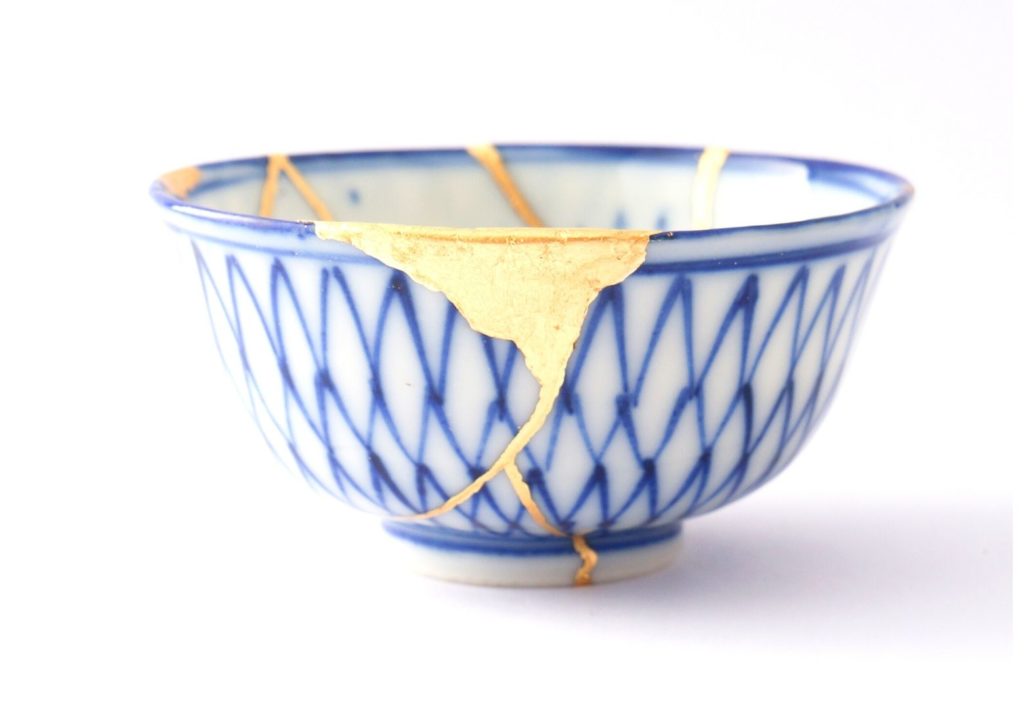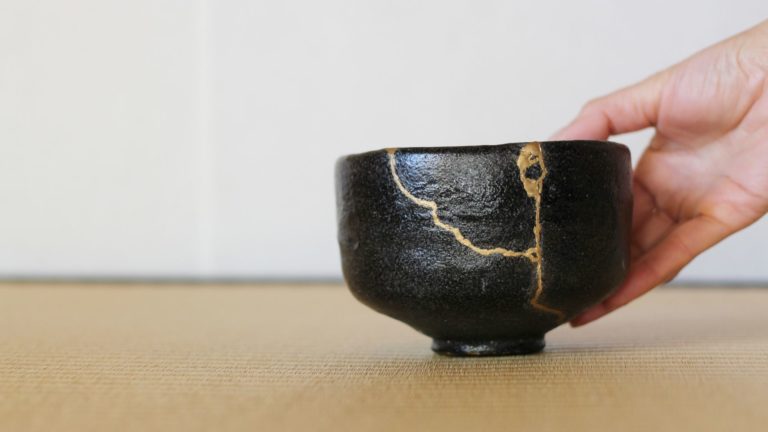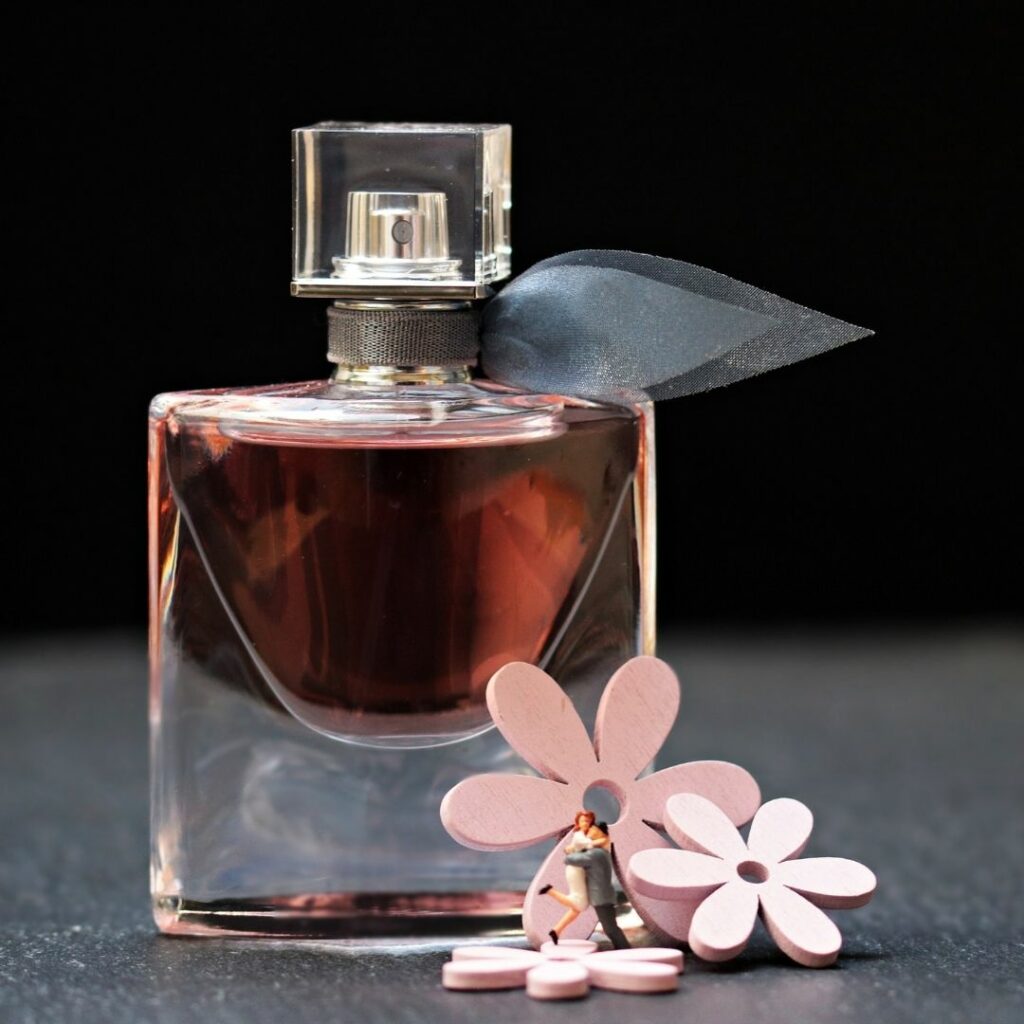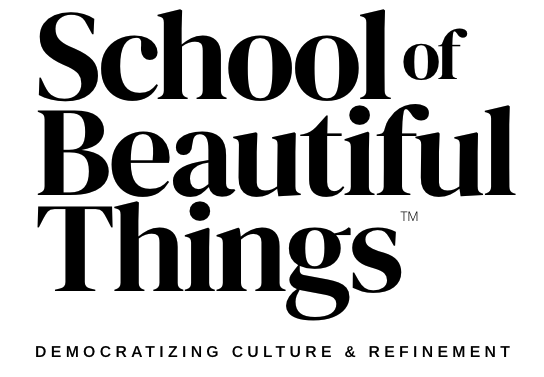We know it’s true; everything has become so disposable…
In our quest for everything being so right, and for everything to happen so fast, we close our eyes to what’s broken, or what takes time to repair. Worse yet, we self-flagellate because of what we consider to be our own imperfections: fine lines that come with wisdom and laughter, scars from life’s battles, stretch marks that come with the joy of childbirth, a changing body shape that comes with continuing to step through time.
Yes, life has a habit of dealing us a range of blows, leaving us with just shattered pieces of what could’ve been. But here at the School of Beautiful Things, we have something to say about that: BRING IT ON and let’s Kintsugi it.
Over centuries, Zen masters have insisted that pots, cups and bowls that have become damaged shouldn’t simply be neglected or thrown away —they should continue to attract our respect and attention and be repaired with enormous care. This process, symbolizing a reconciliation with the flaws and accidents of time, reinforces some big underlying themes of Zen.
Kintsugi literally means to join with gold.
Kin = golden
tsugi = joinery

In Zen aesthetics, the pieces of broken pottery should be carefully picked up, reassembled and then glued together with lacquer inflected with gold powder. There should be no attempt to disguise the damage; the point is to render the fault-lines beautiful and strong.
The care and love expended on the shattered pots should lend us the confidence to respect what is damaged and scarred, vulnerable and imperfect, starting with ourselves and those around us. Because sometimes in the process of repairing things that have broken, we actually create something more unique, beautiful and resilient.





